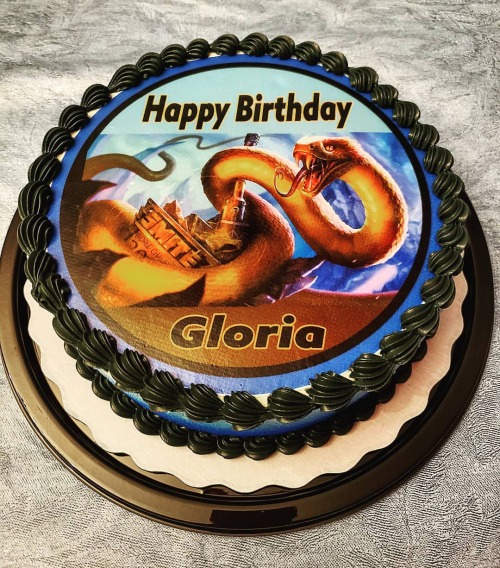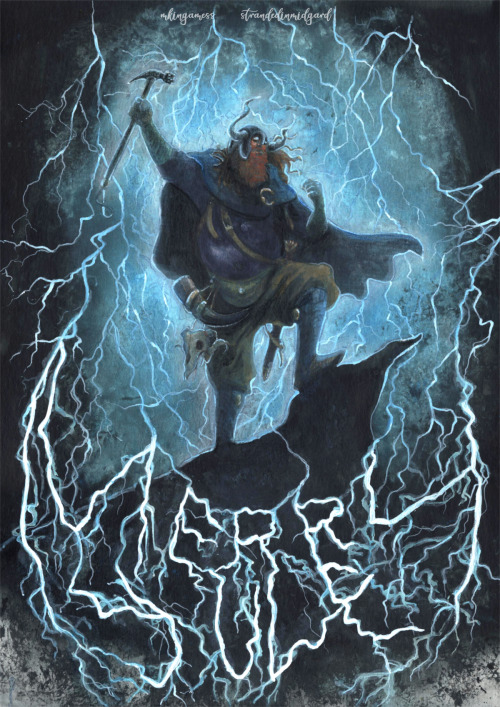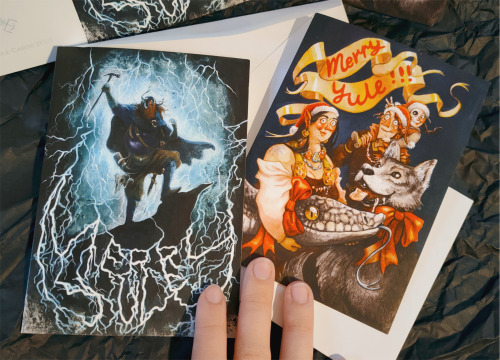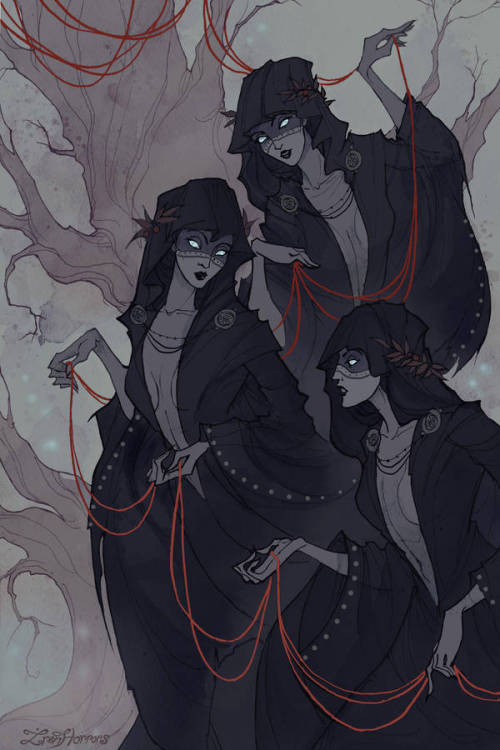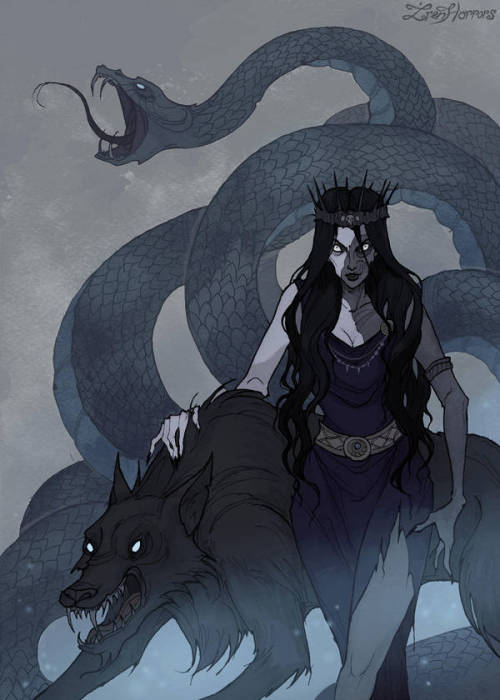#jormungandr
Best boyfriend ever
.
.
.
.
#jormungandr #smite #birthday
https://www.instagram.com/p/CNONzpzH1Sl/?igshid=dag3j16nlrl7
Post link
One of the symbols used to represent Loki is that of two snakes, circling one another to form an ‘S’ shape, and biting the tail of the other (years of archaeological evidence; see Rundkvist below).
Loki is connected to the snake in a number of ways.

Jormungandr, the giant serpent of Loki’s offspring, is said to be so big that he/she can circle the world and bite his/her own tail (Gylfaginning 34), (Thorsdrapa 1).
In an older version of the myth about Idunn’s kidnapping by Thjassi, Loki turns into a snake at one point to wriggle into the room in which the potion of longevity (similar to Idunn and her apples) is being kept (Skaldskaparmal 5).
A snake was also used to punish Loki after the events of Lokasenna. Loki was tied down, and the snake was tied above Loki’s head, so that its venom dripped directly onto Loki (final prose section of Lokasenna).
Another notable serpent in Norse mythology is the Nidhogg, a being that feeds on the roots of the world tree Yggdrasil. However, Nidhogg is not directly associated with Loki in any significant manner (Grimnismal 32-35), (Gylfaginning 15).
Sources:
-Rundkvist, Martin. “Snake Brooches of South Scandinavia.” <http://www.academia.edu/313476>
-image used with permission from <http://aomiarmster.tumblr.com/post/27782533517>
-Gylfaginning, Prose Edda. <http://www.sacred-texts.com/neu/pre/pre04.htm>
-Thorsdrapa, Prose Edda. <http://www.nordic-life.org/nmh/thoreng.html>
-Skaldskaparmal, Prose Edda. <http://www.sacred-texts.com/neu/pre/pre05.htm>
-Lokasenna, Poetic Edda. <http://www.sacred-texts.com/neu/poe/poe10.htm>
-Grimnismal, Poetic Edda. <http://www.sacred-texts.com/neu/poe/poe06.htm>
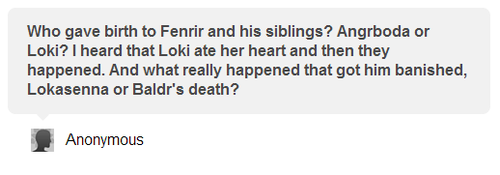
The birth-mother of Fenrir, Hel, and Jormungandr is, for the most part, said to be Angrboda, with Loki as the father. I disagree with this claim, and believe Loki to be the birth-mother. There is support for both the former and latter, but that point is not made clear enough in our surviving sources to make a proper conclusion.
The idea of Angrboda as mother of the brood has merit in its simplicity. Most people assume the female to be the mother, and the male to be the father. Angrboda is female, Loki is male. The mother/father is not explicitly stated, so perhaps the simplest explanation should be assumed.
This claim also tends to go hand-in-hand with the assertion that Angrboda is Loki’s mistress or other wife in Jotunheimr, but this seems completely unfounded to me. There is really no evidence of a relationship having ever existed between the two, or that they even knew one another. I suppose Loki’s self-professed promiscuity could explain him fathering children with a completely arbitrary woman, but casting Angrboda as Loki’s wife seems to be too lazy an assumption.
The incident on which Loki eats a woman’s heart comes from Hyndluljod, a source more dated than Snorri, in the Poetic Edda; as such, I feel the references therein are more accurate to authentic Norse mythology. The account is incredibly vague, and all that is revealed is that Loki eats the half-cooked heart of an “evil woman” that he takes from the embers. He becomes pregnant from this, and gives birth to “the monsters” (flagð). It is not made clear to which “evil woman” the heart belongs, or to what beings “the monsters” refers.
“The monsters” may refer to Fenrir, Jormungandr, and Hel – they are indeed the most suited for the title, among Loki’s other offspring.
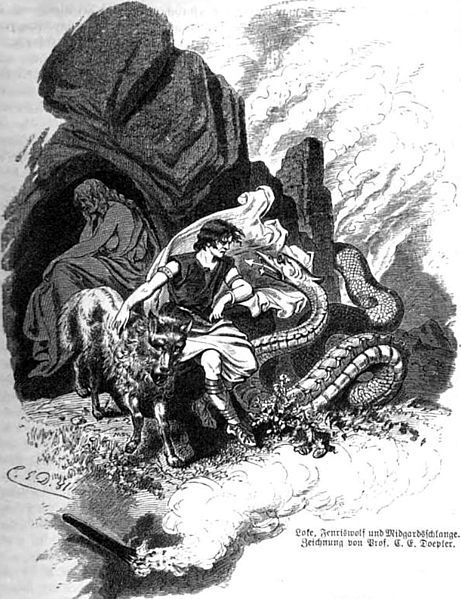
These three “monsters” are usually attributed to the union of Angrboda and Loki, so if it is assumed these three are “the monsters”, then it must also be assumed that the heart belonged to Angrboda. One section of Hyndluljod states that Loki gained the wolf (Fenrir) by Angrboda, which may imply that it was Loki impregnated by Angrboda.
The heart that Loki ate is a mystery all on its own, and its origins should be considered before attributing it to Angrboda. It came from an “evil woman”, Loki took it from the embers, and it was half-cooked. The Voluspa, another entry in the Poetic Edda, mentions the Aesir-Vanir war, which came about when an “evil woman” named Gullveig was thrust with spears and burned by the Aesir in Odin’s hall. We are told she was burnt and reborn three times over, and even that was not enough to destroy her. Perhaps a half-cooked heart remained, and this was the one Loki ate? Angrboda’s heart was said to be frozen like the sea spray, so this may be why the heart did not burn when the rest of the body did. Loki’s reason for eating the heart may have been to prevent further resurrection, which is very similar to Loki’s countless outlandish solutions to unsolvable problems facing the Aesir.
There is a great deal of evidence, although still not fully accepted, that Gullveig and Angrboda are one and the same. I’ll go into Angrboda/Gullveig/Heid in detail in a later post – I need to answer your question first and foremost, and if I start talking about Angrboda, I’ll never get around to it. Angrboda is written as Aurboda in Svipdagsmal, which gives the name the exact same meaning as Gullveig. “Aur” and “Gull” both mean gold, and “boda” and “veig” both refer to a strong alcoholic drink. From the above, although there is no concrete proof, there is a clear possibility that Loki was impregnated by eating Angrboda’s heart, and thus gave birth to his famous monstrous brood.
It is simplest to assume the female Angrboda as the mother, and the male Loki as the father, but we also have evidence to the contrary. There is a bit of confusion on this point, and it seems to be intentional. Angrboda is sometimes called the father, and Loki the mother, and then vice versa. Perhaps this is intended to call attention to the fact that the parentage is different from what is expected. Loki’s androgyny is definitely a theme in many of his myths, and Angrboda’s androgyny is also mentioned at one point (An observer cannot decide if Angrboda is a woman, or a man disguised as a woman). This may be further evidence of their mismatched parental roles.
Furthermore, in Helgakvida Hundingsbane I of the Poetic Edda, two characters are insulting one another by comparing one to Loki, and the other to Angrboda. The character comparing himself to Loki says to his Angrboda-like opponent that they produced the wolf together, and that he was the father. The Angrboda companion corrects him, saying that Loki is not the true father, and that he was emasculated by giving birth to the wolf. If Loki became pregnant by eating Angrboda’s heart, then it was Angrboda’s seed that fertilised Loki, making Angrboda the true father.
So there you go. We don’t know for sure whether the father is Loki or Angrboda, but I believe it was Angrboda, and there is indeed a good deal of support for this idea. There is some more evidence, but it requires a lot more explanation, so I might go into it again once I’ve properly explained Angrboda on this blog.
As for Loki’s banishment/getting bound, it was caused by the events of Lokasenna. For the most part, it seems that the gods bound Loki because they were really angry that he had slandered all of them. Granted, some of the slander was pretty bad, but a lot of it, if not all, was true. Loki knew everybody’s dirty little secrets, and when he revealed them all at the Lokasenna, he got into some trouble. I will write a post on Baldr’s death, and another on Lokasenna as soon as I can – sorry it’s taking so long! I’m pretty busy with university right now, and my major is Chemistry, which is about as far from Norse mythology as you can get…
A Jotunn called Rasvalg once caused a great deal of trouble for Midgard. In the form of an eagle, he fanned great gusts of wind across the land, causing plants, animals, and men to die. Loki and Thor resolved to put an end to this mischief, and set out for Jotunnheimr in Thor’s goat-drawn chariot. While passing through Midgard, they stopped to rest one night in the home of a poor farmer with a wife and two children. The family did not have enough food to properly accommodate their guests, so Thor slaughtered his two goats to feed the group. Thor asked that the bones be laid on the skins when the meal was finished, and that no one break the bones.
Sensing an opportunity for mischief, Loki suggested to the farmer’s son, Tjalfe, that he should break open the bone to eat the marrow inside, reasoning that it was the best part, and contained magical properties. Tjalfe agreed with Loki’s logic, and did as was suggested. In the morning, Thor resurrected his two goats from their bones and skin, using his hammer. But one of the goats was lame, because of Tjalfe’s actions.

Thor was furious at the insubordination, but the father eventually managed to quell Thor’s temper by offering his two children, Tjalfe and Roskva, as servants. They would accompany Thor and Loki to Jotunnheimr, and the group would return after their mission to retrieve Thor’s two goats.
They set off once more, and that night they found a cave that contained five different passages. Startled by roaring sounds outside, they hid themselves in the back of the smallest passage and stayed there for the night. When they awoke and emerged from the cave, they found that the sound had been the snoring of a giant Jotunn, and the passage of what they thought was a cave was actually the thumb of the giant’s glove. The giant introduced himself as Skrymir, and offered to accompany the group. He took it upon himself to carry their provisions, but the giant’s strides were so long that the group could not stop to rest at all, and they were not able to eat all that day.
When Skrymir finally stopped to sleep for the night, the group was famished. They attempted to open the bag to their provisions, but they could not untie the knots with which the giant had sealed it. Even Thor’s immense strength was no match. Frustrated, Thor attempted to wake Skrymir, but the task seemed impossible. Thor threw his hammer three times at the giant’s head, each time with more force than the last. But Skrymir only mumbled that a leaf or an acorn must have fallen on him, and he promptly returned to sleeping each time.

They set out again the next day, and Skrymir announced that he was going on ahead, and they quickly lost sight of him. Eventually, Thor, Loki, and Tjalfe arrived at the castle of the Jotunn Utgarda-Loki (no relation to Loki). The group proceeded to attempt a series of contests, in order to prove themselves worthy of staying at the castle. Loki, hungry from losing his provisions to Skrymir, offered that he could eat more than any Jotunn there, and thus, an eating contest was begun. Loki and his opponent Logi began eating at opposite ends of a trough, and they both reached the exact middle at the same time. However, Loki had only eaten the food, while Logi had eaten the food, the bones, the dishes, and the trough, so Loki lost.
Tjalfe fancied himself to be a swift runner, so he competed against one called Hugi in a footrace. Although Tjalfe was indeed faster than most, he too was defeated by his opponent. Thor then asserted that he could drain a drinking horn, and so a horn was provided for him. Thor drank until he was about to burst, but could only lower the level by a small amount. It was then suggested that Thor lift Utgarda-Loki’s cat, but in this task Thor could only lift one paw. Finally, a feeble, elderly woman named Elli was called out to wrestle with Thor, and in this task too Thor was defeated.

Utgarda-Loki escorted the three humbled guests out of his castle, and once they were outside, he revealed to them that they had been tricked. Fearing the strength of his visitors, Utgarda-Loki had disguised himself as Skrymir, and he had tied up their food so they would be weak with hunger when they arrived at his castle. When Thor had attempted to strike Skrymir’s skull with his hammer, the hammer blows instead had fallen on a nearby mountain, and the force of the blows had created three deep valleys. If any one of the blows had struck Utgarda-Loki, he would have died.
Loki’s eating contest had been against fire, which consumes everything in its path, so it was incredible that Loki was able to perform as well as he had against the flame. Tjalfe’s footrace had been against thought, which works quicker than anyone can run. Thor’s drinking horn had been attached to the sea itself, and Thor had actually managed to lower the level of Midgard’s oceans with the amount he drank. The cat Thor was tasked with lifting was in fact Jormungandr, the Midgard serpent so large it encircled the world, so lifting its paw was an incredible feat of strength. Finally, the old woman had been old age itself, and old age eventually brings everyone, even gods, to their knees. That Thor had lasted as long as he did was better than anyone could have achieved.
Utgarda-Loki apologised for the trickery, but confessed that he was right to do so, because the strength of the group was terrifying, and he could never have beaten them through honest means. Thor raised his hammer, frustrated that he had been made to look a fool, but before he could attack, both Utgarda-Loki and his castle had disappeared. Tjalfe and Roskva returned with Loki and Thor, and served Thor from then on.
Angrboda was a Jotunn witch who sowed seeds of discord wherever she went. She was responsible for provoking the lust for gold, and cheating and murders in Midgard. Acting on behalf of the Jotunns who desired to destroy the Aesir and Vanir, she had used her trickery to create a vast divide between the two. She was eventually discovered and burned for her actions, but she was not so easily destroyed. Her body burned away, but her heart did not. From these remains, Angrboda was able to resurrect herself in entirety. As long as her heart was intact, she could continue to revivify.
The executors promptly attempted to burn the witch a second and third time, but each time, she resurrected, burned, and the heart remained. Loki saw that this game would go on forever if they did not dispose of the heart, so before Angrboda could resurrect again, Loki rushed forward, pulled the heart from the flames, and swallowed it.

But even with that, Angrboda’s evil was not completely destroyed. From the heart he had swallowed, Loki gave birth to three beings: Fenriswulf, Midgardsormr (or Jormungandr, as it was called by the Jotunn), and Hela. Fenriswulf, a large grey wolf, would go on to bite off the hand of the battle god Tyr, herald the beginning of Ragnarok by escaping his bonds, and destroy Odin in the final battle. Midgardrsormr was a serpent who would grow so large he encircled the world, and in the final battle he would destroy the mighty Thor. Hela, a normal woman on one half of her body and a corpse on the other, was the only one of the three who was not destined for evil. She would go on to become caretaker for the dead who were not killed gloriously in battle, in the realm of Niflheim.

Angrboda’s evil also persisted in the tension she had introduced between the Aesir and Vanir. Despite her death, her actions still resulted in a war between the two. In this way, Angrboda had succeeded.
Jormungandr

Jormungandr’s entire climatic challenge is just gonna be “try not to hyperfixate too much, buddy, your family is dying”

[ID: A gray banner with white text reading “Those Horrid, Horrid Things” with white line drawings of a wolf head, snake head, and skull to the left of the text. End ID.]
Get ready for some visitors. Chapter 19 of ‘Those Horrid, Horrid Things’ is up!
When Odin prophesizes Loki’s three monstrous children will bring an end to the Aesir, the trickster god decides the only way to keep them safe is to travel through time and space to where no one will find them.
But this new world is different, with its PTO’s and HOA’s and all other manner of strange sigils. Loki’s children have to make some big changes to remain undetected, and the Father of Monsters themself might be in a little over their head.
Because the gods are still out there searching, and they’ll stop at nothing to lock those horrid, horrid things away.
Chapter 19: The House Guests
There was a crack like lightning, like something ripping open, like something burning and sizzling.
“Ymir’s droopy, swinging tits!” Loki shouted.
Skadi came running. She had on her hockey jersey and a backpack she was trying to stuff one more sword into.
“What is going on?” she asked.
“Get the kids out through the front,” Loki said. “The Aesir are here.”
Her ice-blue eyes scanned the back door.
“For a battle?” she asked.
Loki looked briefly to the window. All they could make out were line after line of figures.
“They’re here for a show,” they said.
They grabbed their sandwich, the butter knife, and jar of peanut butter, and headed for the porch. The Aesir wanted a show. They’d give them a show.
I may have mentioned previously how excited and nervous I was to write what is essentially the Lokasenna redux. Loki gets to finally speak their mind to Odin and the Aesir, and some big truths are revealed in this chapter.
Also, I get to write my crazed, genderfluid dad/mom holding a butter knife to a cat while in their bathrobe and underwear and announcing they’ve captured a goddess, so that’s fun.
WIP:Those Horrid,Horrid Things
(Chapter directory and taglist below the cut):
Chapter 5: The Tupperware Party
Chapter 7: The Parent-Teacher Conference
Chapter 11: The Family Reunion
Chapter 12: The Endless Paperwork
Taglist (ask to be +/-): @authortango,@drippingmoon,@joaniejustwokeup,@thegreatobsesso,@thelaughingstag,@writing-is-a-martial-art
They are HERE and LIVE in the shop now! The StrandedInMidgard Yuletide postcard set for 2021 :)! Here’s my shop link if you want to purchase some! Theres a set and the cards are also sold seperately. Get som for you n your heathen friends <3
Post link

SOON…
…theYule Cards will be available in myshop! I expect it to be early November, so there will be plenty of time to get it before Yule, ya filthy pagans <3
Yggdrasil, the World Tree
By Simon E. Davies of Human Odyssey
In the beginning of the Norse cosmos, there existed an eternal Void, known as Ginnungagap. Out of this nothingness sprang Yggdrasil, a huge Ash tree. Its newly emerging branches held two primordial worlds; Niflheim, a world of ice & frost, and Muspellheim, a realm of molten fire.
When a spring erupted from Nifelheim (known as Hvergelmir), it created a river which crossed the void into Muspellheim. Here, the hot air scorched the freezing river creating a new world, known as Jotunheim, land of the giants.
From this bloodline of primordial beings came Odin, Vili and Ve, who despised the father of giants who ruled his people with malice and brutality. When the chance came, the brothers slew the frost giant, and from his body they created Midgard, a world of mortals. Surrounding this realm they placed a great ocean which nourished the roots of the great tree.
Yggdrasil grew ever higher, forming a new realm called Asgard, which is located on the highest branch of the world tree. This was where Odin, king of the Aesir would take his people to settle a new civilisation. It was said this race of gods brought culture and technology to the world of mortals via a great causeway called Bifrost.
Bifrost was a burning rainbow bridge, connecting Midgard (the world of mortals) with Asgard. This colourful overpass emerged from Himinbjörg, a mountain hall guarded over by the ever-vigilant Heimdall. This watchmen of the gods kept an eye on the mortals below, making sure no giants breached their homeland.
As Yggdrasil continued to grow, a new land emerged on one of its branches called Vanaheim. It was a land full of luscious forests and wild meadows. From this primal wilderness emerged a race of gods known as the Vanir. This tribal people lived near the coast, ruled by Njörðr, a seafaring god who loved wealth and magic, a trait common among his people.
A great tension broke out between the Vanir and the Aesir resulting in a long winded war. It eventually ended in a stalemate, so many of the gods sent their families as hostages to the opposing tribe to help bring them closer together. Njörðr’s son, Freyr, was placed in charge of Alfheim, homeland of the Elves. This class of god-like beings were said to be “more beautiful than the sun.”
These elves were also linked to another realm far below the Earth. Legend says a tribe from Alfheim were exiled from their homeland many eons ago, and eventually sought refuge with the dwarves of the underworld. These subterranean beings had build their homes around the roots of Yggdrasil, carving a network of labyrinths, mines and forges for their empire. They called it Niðavellir, and the elves, who skin eventually became black as night, called it Svartalfar.
All the beings of Yggdrasil, mortals, gods, dwarves and elves would eventually die, and their souls were destined for several realms. If the Aesir died valiantly in battle, they would find rest in Valhalla, for all others, Helheim was their inevitable destination. This dark and gloomy abode resided at the tip of Yggdrasil’s deepest root. This afterlife was ruled over by Loki’s daughter Hel, a strange being who was half black and half flesh-coloured, characterised by a gloomy, downcast appearance.
There are a number of sacred creatures which live within Yggdrasil. this includes the monstrous wyrm Níðhöggr who gnaws at the roots of Nifelheim, weakening the great tree of Yggdrasil. This frost dragon was also known for eating the corpses of the Nifelheim when found guilty of murder, adultery and oath-breaking.
Atop the highest branches of the world tree is perched a great eagle and his hawk companion Vedrfolnir, who sits between his eyes. The two stare deep into the Norse cosmos, perhaps representing insight and awareness.
Ratatosk is a squirrel who runs up and down the world tree to carry messages between the unnamed eagle and Níðhöggr the wyrm. This mischievous critter is said to stir trouble between the all knowing eagle and the world hungry dragon.
Among the branches of the Great Ash tree live four stags known as Dáinn, Dvalinn, Duneyrr and Duraþrór. These ravenous beasts eat the branches of the World Tree, perhaps representing the four seasons. When they eat too much, winter ensues, when they are full, the leaves grow thick and lush in the midst of summer.
Perhaps the most important guardians of Yggdrasil are the three Norns (witches) who lives at the well Urd (below Midgard). Their names are Urd “past”, Verdani “present” and Skuld “future”. These three hags are the goddesses of fate, who spend most their time spinning the threads of life, deciding the fate of every human, animal and god. Every day the Norns will also carry water from Urd’s well, and pour it over Yggdrasil. The water from the well is of vital importance to keep the tree green and healthy.
It is the Norns who foretold Ragnarok, the twilight of the Gods and the fall of Yggdrasil. It is said that Ragnarok will begin when the wolf, Fenrir, son of Loki, breaks free of his imprisonment. This will lead to a chain reaction of events including the Midgard snake Jormungandr rising from the sea and a wolf (known as Skoll) devouring the sun, and his brother Hati, eating the moon, plunging the earth into darkness. The stars will vanish from the sky.
Everything will come to a head in a huge battle that draws in all the races of the nine worlds. It will conclude with Surter, king of the fire giants, setting fire to the great Yggdrasil. The nine worlds will burn, and friends and foes alike will perish, culminating with the earth sinking deep into the abyss of the sea.
Post link
Ksenia Svincova has created some dark and fantastical artwork inspired by Norse Mythology.
Featured here:
The Norns
Freyja
Idunn
Loki
Loki’s Children
The Wild Hunt
Skadi
The Punishment Of Loki
Post link

Angrboða The Mother of The Serpent

